Last Updated: November 16, 2024
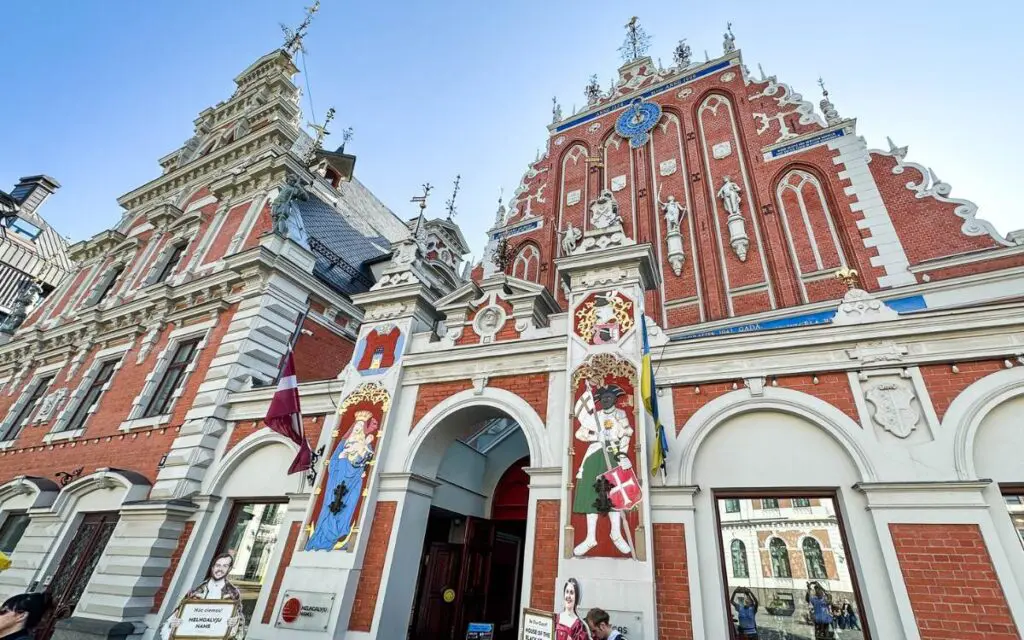
From Tallinn, Estonia, we made our way during our retirement travel to the capital of Latvia, Riga, set on the Baltic Sea and known primarily for its architecture. When it comes to European city breaks, the Baltic gem of Riga often remains a hidden treasure. And while some of the best Riga tourist attractions are Gothic churches, medieval buildings, Art Nouveau decorated streets, wooden houses, and modern masterpieces, there are plenty of other activities to keep you busy on your city break. Our week long stay flew by thanks to all the fun things to do in Riga. If you are planning on traveling the Baltics, do not hesitate to add this wonderful city to your itinerary and use this Riga travel guide to create an unforgettable stay. You’ll get to explore the best places to visit in Riga and go on enticing day trips to other parts of Latvia beyond the city’s borders.
Best of Riga Attractions and Day Trips
The Charms of Old Town
Riga’s heart lies in its historic center, the Old Town. Declared a UNESCO World Heritage Site, its cobblestone streets, colorful buildings, and medieval spires create a captivating atmosphere. Whether you are doing a self-guided tour or decided to surrender yourself into the trusty hands of a local guide, there are a few Old Town landmarks you shouldn’t miss. (Use our Get Your Guide Links and help us out!)
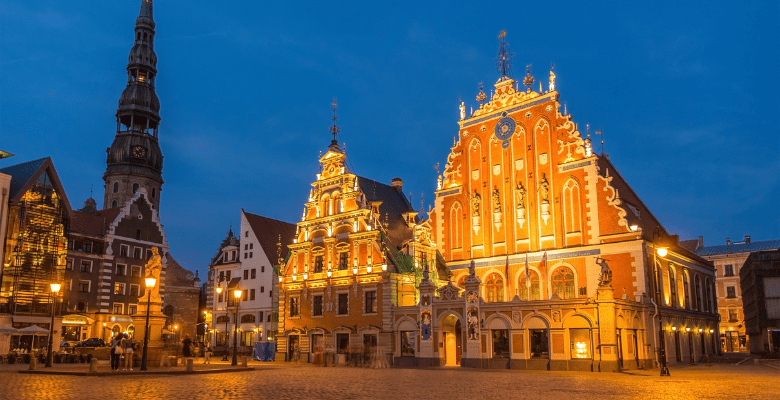
First off is the breathtaking ornate pink gothic-style building that dominates the Riga Town Hall Square with a name that doesn’t fit its appearance. The House of Black Heads is much more appealing to look at than it sounds. Originally built in 1334, it served as a meeting place for the Brotherhood of Blackheads, a group of bachelor merchants. The façade and much of the building have been reconstructed after WWII, except for the cellar, which is still in its original state. Today, the building is a museum, but its ballroom is still used as intended – to host grand events, occasionally even meetings of the president of Latvia. Fun fact: The Brotherhood of Blackheads erected the world’s first decorated public Christmas tree in 1510. In Riga Town Hall Square you’ll find a marker labeling the exact spot, which still has a tree in it every year, over 500 years later.
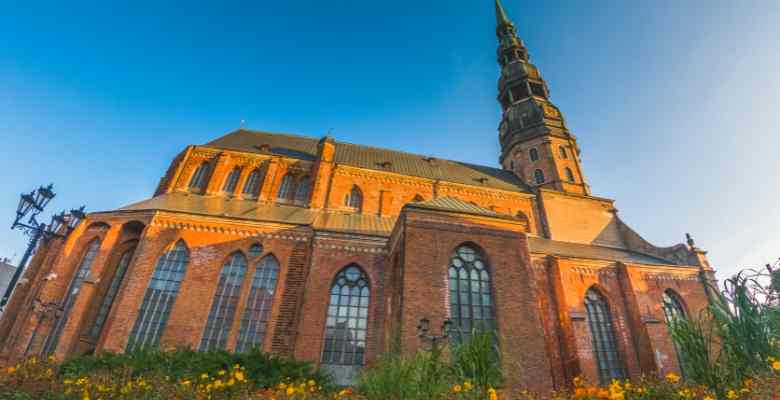
Contrasting all that pink, the moody St. Peter’s Church towers over the square. This stunning medieval church dates back to the 12th century and is topped with an emblematic tiered spire. The church has gone through many disasters and destruction, including a lightning strike, but still stands tall today, acting as a symbol of resilience. For a fee, you can climb up the spire to the viewing platform that offers 360-degree views of Riga, Latvia.

Near Jauniela Street, what some consider the most charming street in Old Town, you will find three of the most iconic buildings in Riga, Latvia, the oldest of the three dating back to the 15th century. Carrying on with the brother theme, the three houses were built by three brothers and hence are known as The Three Brothers. Today, they house the Museum of Architecture, because although created by the same family, they represent a timeline of architectural trends through centuries.

As you wander around, you will undoubtedly spot murals and sculptures everywhere that elegantly fit into the scene, even though most of them are of animals. The Bremen Town Musicians from the famous tale by the Grimm Brothers is one of the most popular of all. And the most loved one thanks to the the superstitious ritual that calls to rub the noses of all four animals piled on top of each other to have a wish come true.
Then there is the Cat House, adorned with angry cat sculptures, “Sam” the monkey astronaut, an armadillo, a giant fox, and more. We recommend taking a walking tour if you want to increase your chances of spotting them and learning about their meaning and origins. Although there is quite a variety of animals you can spot around Riga, cats – bronze, painted, and the real furry kind – are definitely the majority. We learned that they have become the symbol of Riga, Latvia due to a popular legend that explains the black angry cats atop the Cat House were placed there by a tradesman to convey his displeasure with the Guild.
National Library of Latvia

Take a stroll along the Daugava River and on the opposite bank from the Old Town it’s impossible not to spot the National Library on the horizon, a symbolic asymmetrical pyramid that’s supposed to resemble a mountain topped with a flame but also kind of looks like a spuming wave. Its symbolic name, The Castle of Light, is a metaphor for Latvia’s occupation and independence. The glass peak of the library takes up two floors and hosts an observation deck that offers a fantastic view over the city center and Old Town.
Art Nouveau Quarter
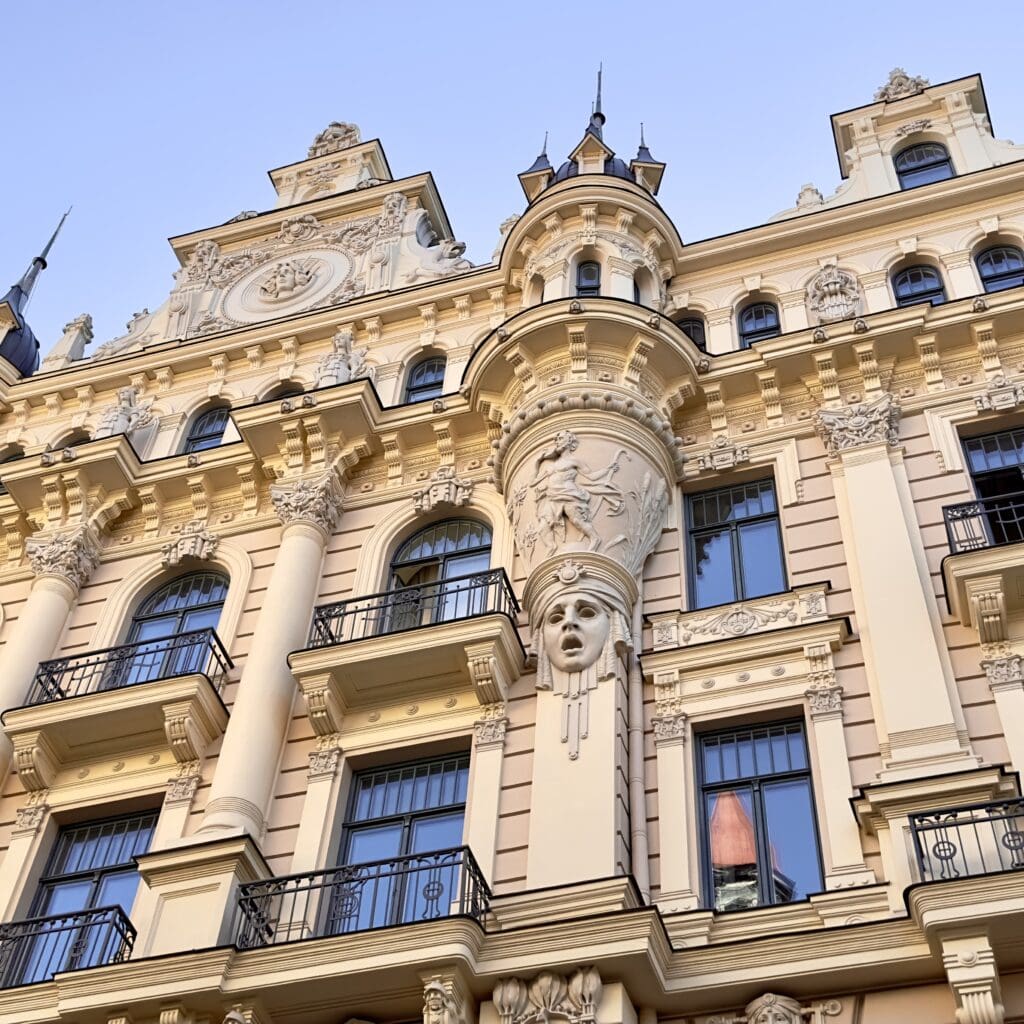

Remember how we said Riga is known for its architecture? Well, it’s home to the world’s largest collection of Art Nouveau buildings. The Art Nouveau district and more specifically, Alberta Street, is where you’ll find the crème de la crème of Riga’s Art Nouveau facades. If you fall into the category of people who enjoy peering into the windows of spectacular buildings, wondering what’s on the inside, then you must visit the Riga Art Nouveau Museum. The exhibition is set up, down to the smallest details, to make you feel like you’ve entered someone’s 20th-century Riga home.
Riga Central Market
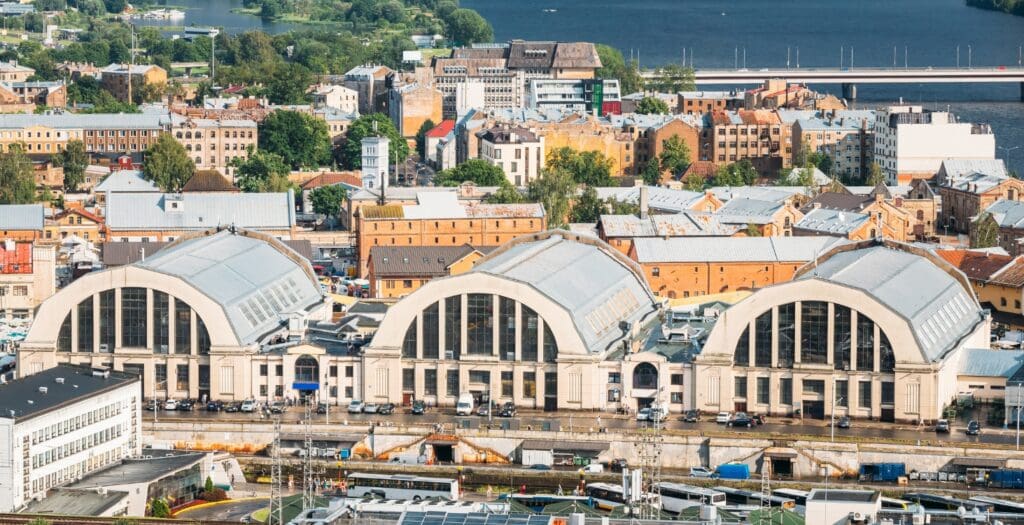
Visiting the Central Market is a must do in Riga. It’s the largest indoor market in all of Europe and is a literal feast for the senses. But what’s even more impressive is it being situated inside old German zeppelin hangars left behind since WWI! And boy are they massive! Declared a UNESCO World Heritage Site, this is the most unique place to sample Latvian delicacies, explore local produce, and pick up souvenirs. Securing a prime riverfront location in the city, the market is easily accessible by train or bus and is very hard to miss. You have no excuses!
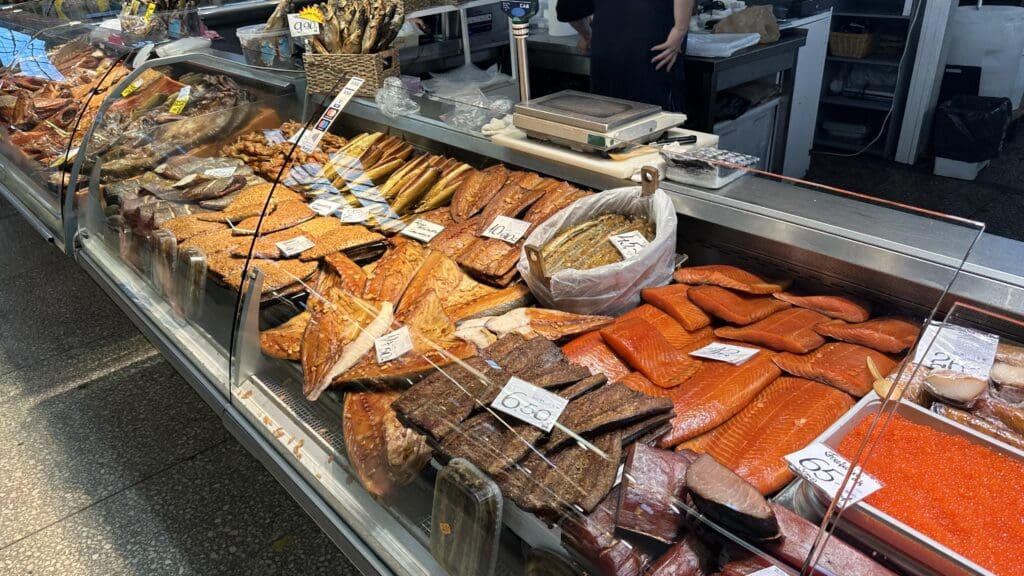
Riga Black Balsam
One thing you can’t go without trying is Riga Black Balsam. This potent spirit-based elixir is said to have been invented over 260 years ago out of 24 healing ingredients, hence, it leaves a slightly medicinal aftertaste. Today, you will find many shops all over town offering souvenir-style bottles and the traditional drink now comes in many different flavors. But if you want to try the balsam and actually enjoy it, we recommend heading to Black Magic Bar, which is an apothecary-themed shop selling balsam-inspired cocktails and desserts.
Traditional Eats

When searching where to grab a traditional Latvian bite to eat, you can never go wrong with Lido. This family-owned chain of restaurants, born in the late 1980s, is the best place to taste a variety of Latvian food and comes highly recommended by locals. The restaurants are cafeteria-style, where you grab a tray, peruse the selection, pick what you like, then find a seat and tuck in. Lido has branches dotted all over Riga, but the most iconic one is Lido Atputas, located ten minutes outside of the center. The restaurant is housed in a big log cabin and surrounded by a recreational park, so you can easily spend a good chunk of your time here.
Best Dinner in Riga, Latvia
For dinner, we recommend heading to Ala Pagrabs, one of the most loved pubs in Riga serving traditional food. Getting there is like walking through a maze, hidden underground, that you conquer by following the sound of music since your dinner is likely to be accompanied by a performance if you time your visit right. Blending culture, traditional food, and local brew in an underground setting, it’s no wonder the name of this pub translates to ‘Folk Club Cave’. To ensure you have the best time possible, book your table in advance.
Day Trip to Hill of 100 Thousand Crosses
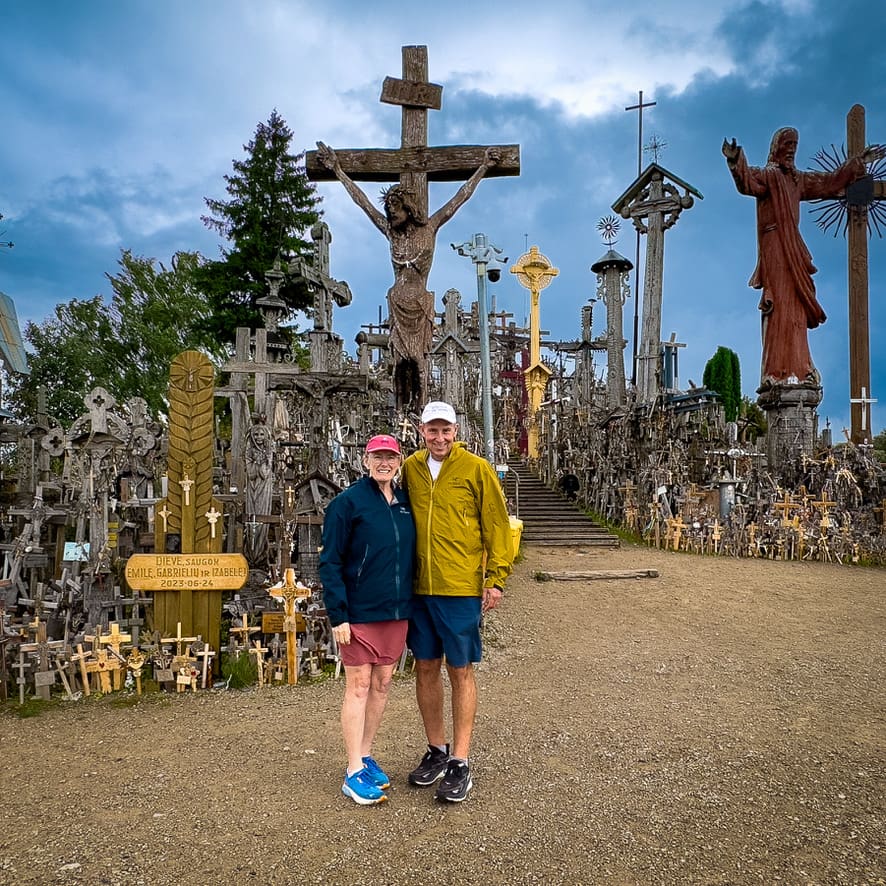
There is no other place in the world quite like this one. In northern Lithuania lies the unique Hill of Crosses, a symbol of defiance and a pilgrimage site. The Nazis destroyed the hill during WWII and again several times by Russia during the Soviet era, but it kept coming back. When Lithuania finally gained freedom in 1991, the hillside became flooded with crosses and is known for hope, peace, love, and sacrifice. It is called the hill of 100,000 crosses, but we suspect the number is much higher. It now symbolizes the strength of Lithuanian culture and their unshakeable faith. The hill is located just under two hours from Riga.
Day Trip to Jurmala
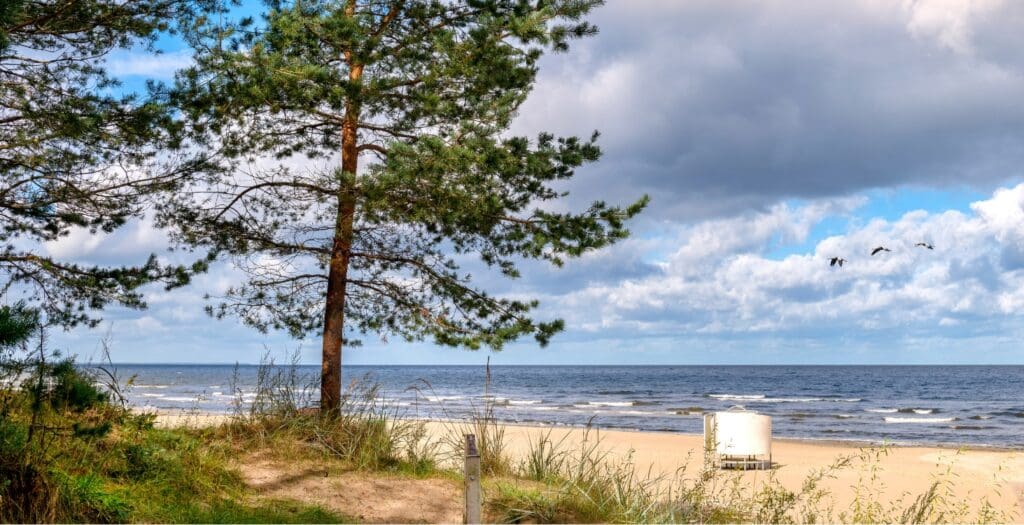
We finished off our stay with one of the best day trips from Riga, Latvia to the largest and most popular resort town, Jurmala. Located only 30 minutes from Riga, it’s famous for stunning beaches and healing natural resources. Since we visited off-season and it wasn’t exactly beach weather, we got to enjoy the place minus the crowds and decorated with enhanced colors of fall. We strolled along the 25-kilometer-long white sand beach, explored the pine forest, and paid a visit to the mysterious Kemeri Bog.
Having rejuvenated in Jurmala, we were all set to continue our journey across the Baltic states to Vilnius, Lithuania. Follow along to find out if it’s worth a visit, and check out our reasons to add Tallinn, Estonia to your bucket list if you missed our last post.
Riga Attractions Map
HOW TO SAVE THIS MAP:
Each icon has embedded information in the map, so click to review. To the right of the title of the map, click the ⭐️ STAR to save to your Google Map Account. To view it on your computer or phone, open Google Maps, click the three lines on the upper left, select “Saved,” select “Maps,” and this map will be listed below.
Best Time to Visit Riga, Latvia
We have linked a great website to this button showing the weather for this location by the month. Click below to be taken to Weather-and-Climate.com.


Angelo Kournianos
Great what you doing. I disagree on Medehellin, Columbia. Looking on YouTube murders on the rise and kidnapping. Thing to worry about in taxi from airport people on motor bike waves gun to taxi driver to pull over and rob you. Asian kidnapped family send 2k and still kill him. Beat him up and stab him. Columbians have no value in life. Resurgence like the 1900’s again.
rtravelers
Thanks for sharing. We could probably see similar stats for many American cities as well. We don’t go to areas that we shouldn’t, and felt safe in the areas we visited in Medellin.
John and Bev